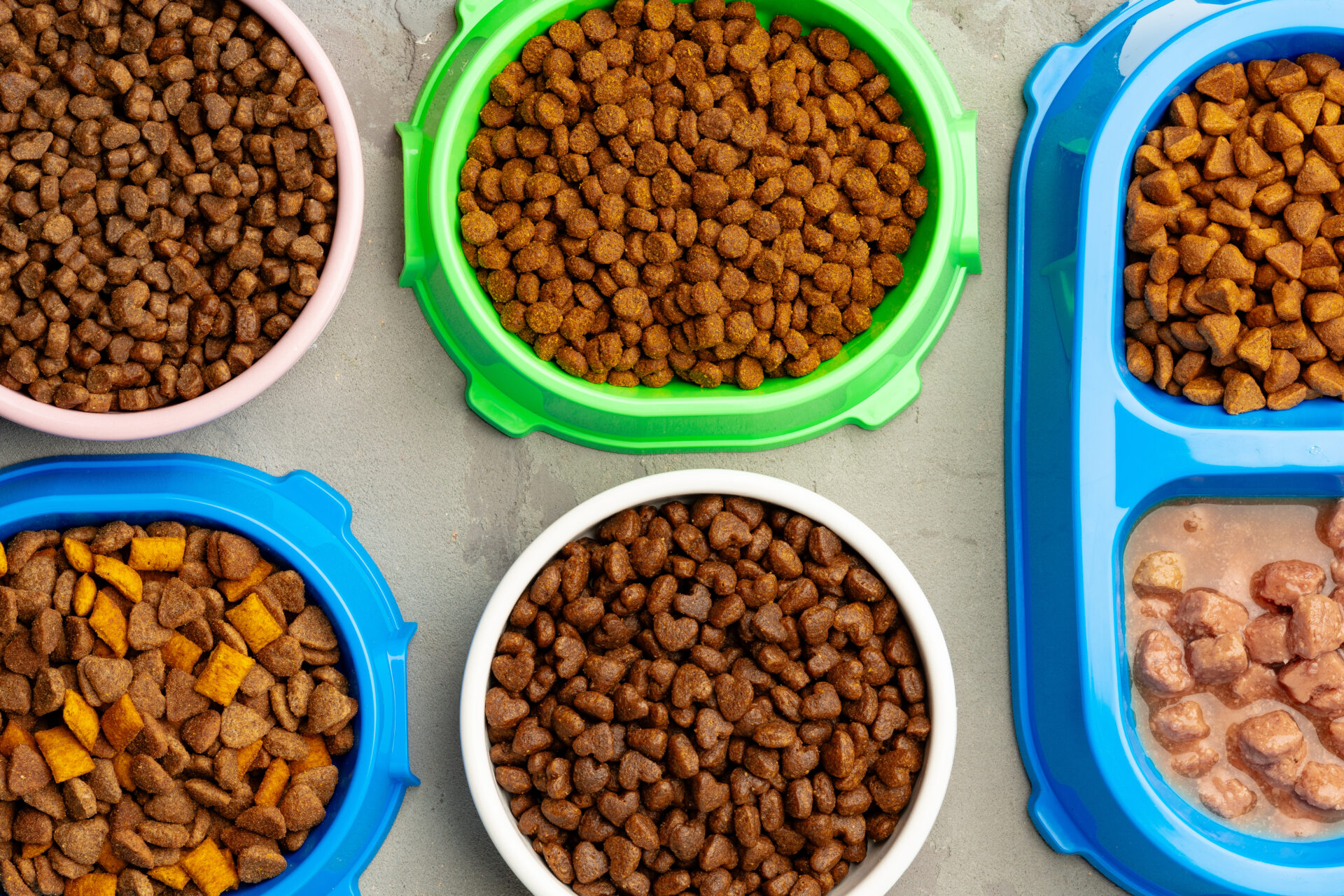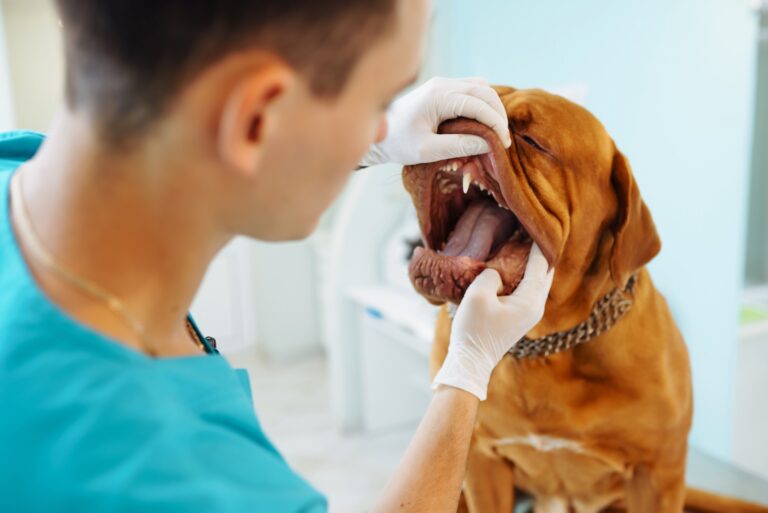Good nutrition is the foundation of your dog’s health and happiness. But with so many options on the market—kibble, canned food, raw diets, grain-free formulas—it can feel overwhelming to choose the right one for your furry friend. In this guide, we’ll break down the essentials of dog nutrition, how to evaluate dog food labels, and tips for selecting the best food for your dog’s unique needs.
Some of the links on this page are affiliate links, which means we may earn a commission at no extra cost to you if you make a purchase. As an Amazon Associate I earn from qualifying purchases. We only recommend products we genuinely love and think you’ll find helpful!
Why Nutrition Matters for Dogs
A balanced diet is essential for maintaining your dog’s overall health, energy levels, and longevity. Proper nutrition supports:
- Healthy growth and development (especially in puppies).
- Strong immune function to fight off illness.
- Shiny coats and healthy skin.
- Optimal weight management to avoid obesity-related issues.
- Joint health and mobility in aging dogs.
“Dogs, like humans, thrive on a well-rounded diet that meets their specific needs,” says Dr. Lisa Freeman, a veterinary nutritionist. Choosing the right dog food is paramount to your pup’s health.

The Basics of Canine Nutrition
Dogs are omnivores, meaning they need a mix of protein, fat, and carbohydrates in their diet, along with vitamins and minerals. Here’s a breakdown of what to look for:
1. Protein
Protein is the cornerstone of a dog’s diet. It builds muscle, repairs tissue, and supports a healthy coat.
- Look for high-quality sources like chicken, beef, lamb, fish, or turkey.
- The protein source should be the first ingredient listed on the food label.
2. Fat
Fats provide energy and essential fatty acids that support skin and coat health. Look for healthy fats like chicken fat or fish oil.
3. Carbohydrates
While not as essential as protein and fat, carbohydrates provide energy and fiber. Brown rice, sweet potatoes, and oats are good options.
4. Vitamins and Minerals
These support various bodily functions, from bone health to immune support. Most commercial dog foods are fortified with the necessary nutrients.

Types of Dog Food: Pros and Cons
There’s no one-size-fits-all answer to the best type of food—it depends on your dog’s age, breed, activity level, and health. Here’s a breakdown of the most common options:
1. Dry Kibble
Pros: Affordable, convenient, long shelf life, helps reduce tartar buildup.
Cons: May contain fillers, lower moisture content, quality varies widely.
2. Wet Canned Food
Pros: High moisture content (great for hydration), palatable for picky eaters.
Cons: More expensive, less convenient for storage, may contribute to dental issues if not balanced with dental care.
3. Raw Diets (BARF – Biologically Appropriate Raw Food)
Pros: Mimics ancestral diets, often contains high-quality ingredients.
Cons: Expensive, time-consuming to prepare, risk of bacterial contamination if not handled properly.
4. Fresh or Homemade Diets
Pros: Full control over ingredients, great for dogs with allergies or sensitivities.
Cons: Requires careful planning to ensure nutritional balance, can be costly.
5. Grain-Free Diets
Pros: May benefit dogs with grain allergies or sensitivities.
Cons: Recent studies link grain-free diets to canine heart disease (dilated cardiomyopathy), so consult your vet before choosing this option.

How to Read Dog Food Labels
Dog food labels can be confusing, but learning how to read them is crucial for making informed decisions.
1. Look at the Ingredient List
Ingredients are listed in descending order by weight. High-quality foods list a specific protein (e.g., “chicken” or “salmon”) as the first ingredient. Avoid foods with vague terms like “meat meal” or “animal byproducts.”
2. Check for an AAFCO Statement
The Association of American Feed Control Officials (AAFCO) ensures pet food meets minimum nutritional standards. Look for a statement that says the food is “complete and balanced” for your dog’s life stage.
3. Avoid Unnecessary Fillers and Additives
Stay away from foods with excessive fillers like corn, wheat, or soy, and avoid artificial colors, flavors, and preservatives.
4. Analyze the Guaranteed Analysis
This section lists the percentages of protein, fat, fiber, and moisture. Compare these values to your dog’s nutritional needs.

Choosing Food for Specific Needs
Every dog is unique, and their diet should reflect their individual requirements. Here’s how to tailor their nutrition:
1. Puppies
Puppies need food formulated for growth, which contains higher protein and fat levels. Look for puppy-specific formulas rich in DHA for brain and eye development.
2. Adult Dogs
Adult dogs need balanced maintenance formulas with moderate protein and fat levels. Adjust portion sizes based on their activity level.
3. Senior Dogs
Senior dogs may benefit from lower-calorie foods to prevent obesity and formulas with added glucosamine and chondroitin for joint health.
4. Active or Working Dogs
Dogs with high activity levels require foods with higher protein and fat content to fuel their energy needs.
5. Dogs with Allergies or Sensitivities
If your dog has food allergies, consider limited-ingredient diets or hypoallergenic formulas. Common allergens include beef, chicken, dairy, and wheat.
6. Overweight Dogs
Choose weight management formulas with lower calorie density and higher fiber content to help your dog feel full while losing weight.
Common Myths About Dog Nutrition
Myth #1: Dogs Should Only Eat Raw Food
While raw diets can work for some dogs, they’re not inherently better than other diets and require careful planning to ensure safety and balance.
Myth #2: Grain-Free is Always Healthier
Grains are not inherently bad for dogs and provide valuable nutrients. Unless your dog has a specific allergy, grain-free diets may not be necessary.
Myth #3: Table Scraps Are Harmless
Many human foods are dangerous for dogs, including chocolate, grapes, onions, and anything with artificial sweeteners like xylitol.
Transitioning to a New Dog Food
Switching your dog’s food too quickly can cause digestive upset. Follow this gradual transition plan:
- Days 1-2: Mix 25% new food with 75% old food.
- Days 3-4: Mix 50% new food with 50% old food.
- Days 5-6: Mix 75% new food with 25% old food.
- Day 7: Transition to 100% new food.
Watch for signs of intolerance, like diarrhea, vomiting, or itching, and consult your vet if needed.
DIY or Homemade Dog Food: Is It Right for You?
Making your dog’s food at home can be a great option, but it requires careful planning to ensure a balanced diet. Work with a veterinary nutritionist to avoid common pitfalls, such as calcium deficiencies or excessive fat content.
The Role of Treats in Dog Nutrition
Treats are a valuable training tool, but they shouldn’t exceed 10% of your dog’s daily caloric intake. Opt for healthy, low-calorie options like carrots, apple slices (without seeds), or commercial treats designed for dental health.
When to Consult Your Vet
Always involve your veterinarian in decisions about your dog’s diet, especially if they have health conditions like kidney disease, diabetes, or food allergies. A vet can recommend prescription diets or supplements tailored to their needs.
Conclusion
Choosing the best food for your dog is one of the most important decisions you can make as a pet parent. By understanding their nutritional needs, learning to read labels, and considering their unique requirements, you’ll set them up for a lifetime of good health and happiness.
Remember, every dog is different, so don’t hesitate to consult your vet or try different foods to find the perfect fit for your four-legged friend. A well-fed dog is a happy dog—and there’s nothing better than seeing that tail wag in appreciation!




